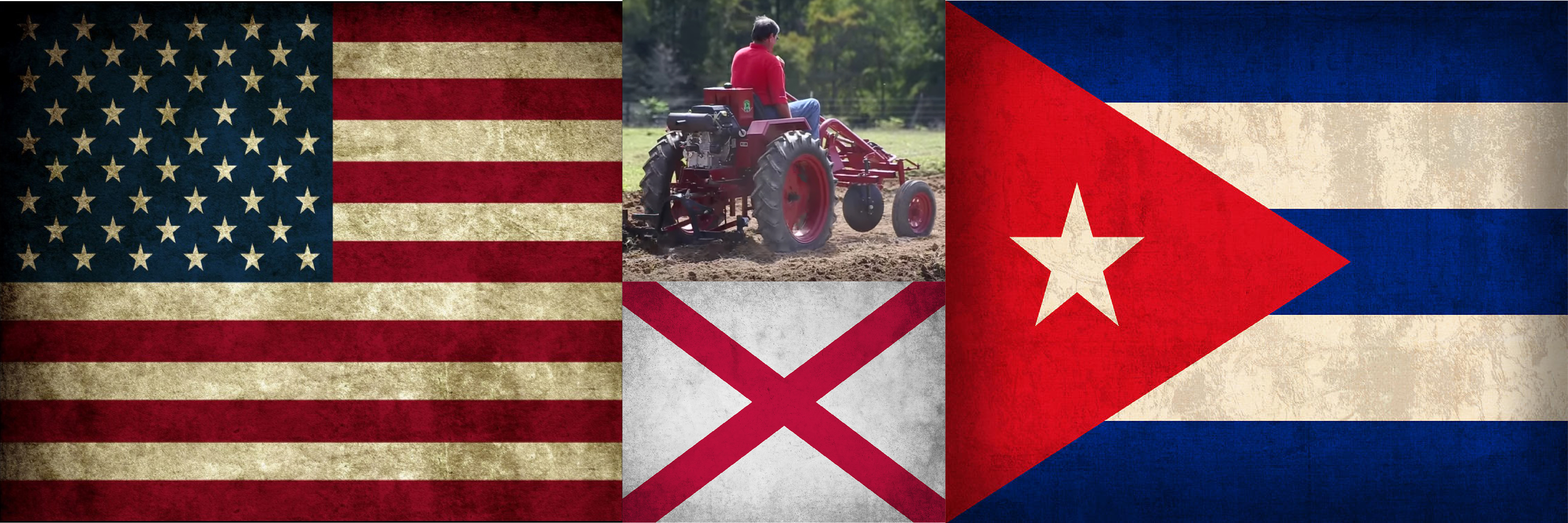
Alabama tractor company owned by Paint Rock man will be first U.S. business on Cuban soil since 1959
By: Joseph M. Morgan
HAVANA, Cuba--A Paint Rock man and his small business have accomplished something that no company in America has been able to do since 1959. After decades of crippling commercial and economic sanctions and strict embargoes on trade and travel between the U.S. and Cuba, Cleber, LLC., a tractor manufacturer owned by local resident Horace Clemmons and his business partner Saul Berenthal, will soon become the first American company to conduct business on Cuban soil for more than 55 years.
Clemmons received authorization from the U.S. Treasury Department last week for his company to establish the new operation in Cuba for the manufacture of tractors and other heavy equipment to be sold to Cuban farmers. Cleber, LLC, at least while in Cuba, will assume the name of Oggun, named after a god in Cuba's syncretic Santeria religion. The Oggun tractor plant will be built on property located inside a special economic zone established by the Cuban government in 2014 as part of ongoing efforts to recruit new industry and attract foreign investors to the country. The plant will assemble commercially available components into a durable and easy-to-maintain 25-horsepower tractor selling for less than $10,000, Clemmons and Berenthal said.
"Everybody wants to go to Cuba to sell something and that's not what we're trying to do. We're looking at the problem and how do we help Cuba solve the problems that they consider are the most important problems for them to solve," Clemmons told the Associated Press yesterday. "It's our belief that in the long run we both win if we do things that are beneficial to both countries."
The $5 million to $10 million plant will be the first major investment in Cuba from a U.S. business since Fidel Castro took power in 1959. Almost immediately after taking power, the dictator’s new government launched a campaign to nationalize all industry and business in Cuba, seizing the properties, businesses and assets of thousands of privately owned companies in the name of the state, including billions of dollars of American-owned corporate and private property. In response to the government’s property seizures, the U.S. launched an embargo on Cuba that shut down trade, banned travel, and prohibited virtually all forms of commerce with the island.
After more than half a century of open hostility and poor diplomatic relations between the U.S. and Cuba, in the past two years both countries have exhibited a genuine desire to mend fences. Presidents Barack Obama and Raul Castro announced on Dec. 17, 2014, that they would work to rebuild the broken relationship.
“For more than fifty years, the United States pursued a policy of isolating and pressuring Cuba. While the policy was rooted in the context of the Cold War, our efforts continued long after the rest of the world had changed,” President Obama said. “The United States was isolated within our own hemisphere — and in the wider world — which disagreed with our approach. Most importantly, our policy was not making life better for the Cuban people — and in many ways, it was making it worse.”
The Obama administration has slowly worked to reintroduce trade and commerce and begin the partial lifting of bans on travel. Through a series of executive actions, the administration has mandated specific geographic locations in Cuba as areas that U.S. manufacturing will be allowed. Another exception to bans was established for companies that agree to export products that benefit private and cooperative farmers in Cuba—a perfect fit for Berenthal and Clemmons who plan to sell their tractors exclusively to the private sector.
Obama confirmed his commitment to improving relations when he announced yesterday that he and the First Lady will be taking a historical trip to Havana, Cuba March 21-March 22, 2016, making him the first American President to visit Cuba since President Coolidge traveled there on a U.S. battleship in 1928.
Clemmons estimates that Oggun could build and sell upwards of 1,000 tractors per year. He expects to be fully operational in Cuba by the first quarter of 2017.
Cuban and American officials have already publicly endorsed the project, and Obama and Castro both seem fully committed to the continued work it will take to improve diplomatic relations. The story of the tractor business from North Alabama that is helping bridge a 55-year divide between Cuba and the U.S. is making headlines across the country. This news yesterday, along with the news that President Obama will soon be the first president to visit Cuba in almost 80 years is historical. Both are significant steps toward building a new relationship between the U.S. and Cuba that could one day be free of embargos and sanctions.

